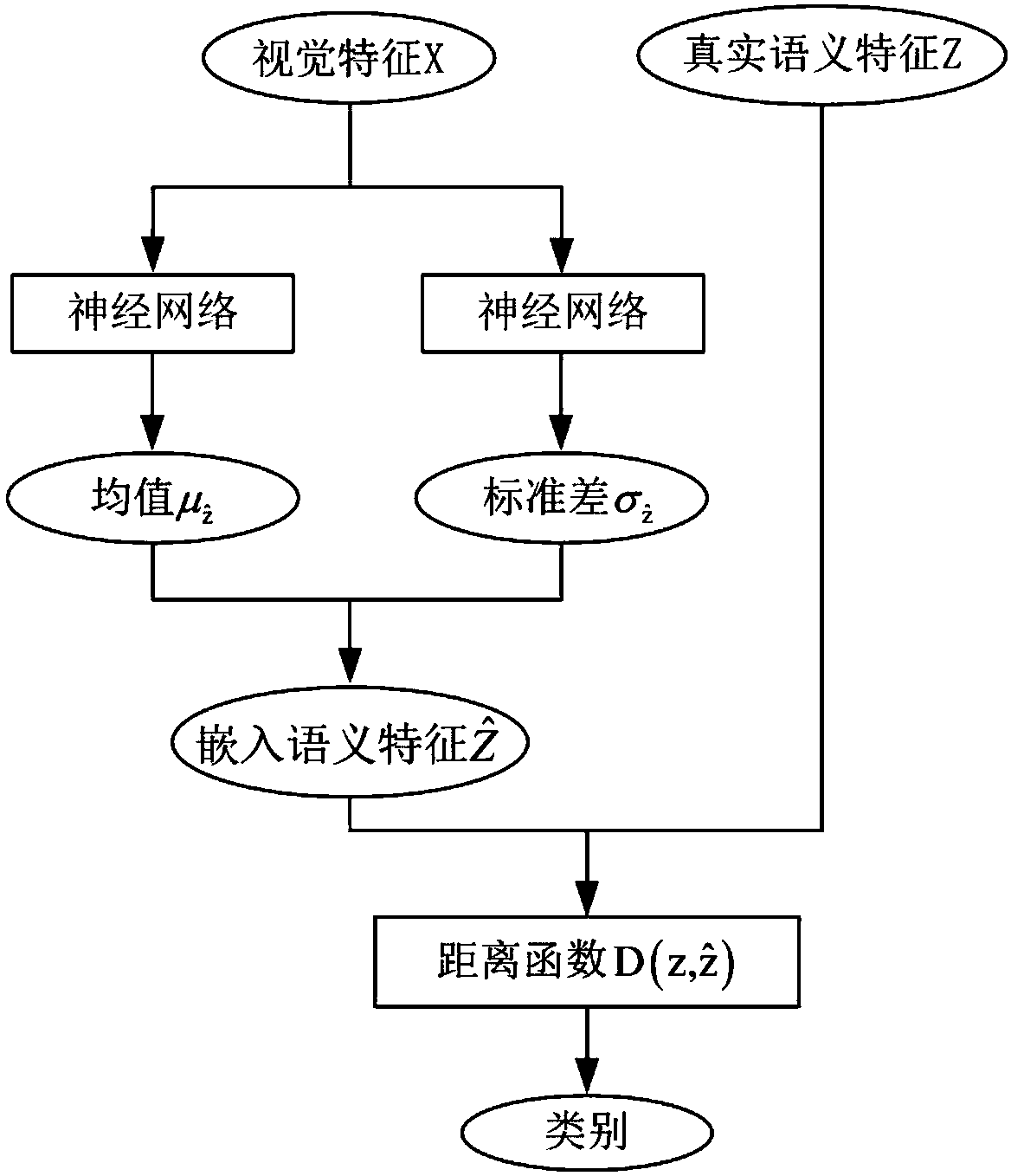Variational automatic encoder-based zero-sample image classification method
An autoencoder and sample image technology, applied to neural learning methods, instruments, computer components, etc., can solve problems such as labor-intensive and lack of labeled data
- Summary
- Abstract
- Description
- Claims
- Application Information
AI Technical Summary
Problems solved by technology
Method used
Image
Examples
Embodiment Construction
[0041] Given a set of visible class samples S={(x i ,z i ,y i ),i=1,...,n}, is the visual feature of the visible class sample, is the semantic feature of visible class samples, is the category of visible class samples, and n is the number of visible class samples. The purpose of zero-shot classification is to classify the visual features of a given unseen class sample j=1,...,m (m is the number of unseen class samples) and semantic features of all unseen class categories (t is the number of categories of unseen classes), predicting the category of unseen class samples j=1,...,m, where
[0042] The current method to solve the zero-shot image classification problem mainly includes the following three steps:
[0043] 1) Use training samples to train visual space to semantic space map f: or semantic space to visual space map g: Semantic embedding model of ;
[0044] 2) Use the learned model to map samples of unknown categories to semantic space, or map ...
PUM
 Login to View More
Login to View More Abstract
Description
Claims
Application Information
 Login to View More
Login to View More - R&D
- Intellectual Property
- Life Sciences
- Materials
- Tech Scout
- Unparalleled Data Quality
- Higher Quality Content
- 60% Fewer Hallucinations
Browse by: Latest US Patents, China's latest patents, Technical Efficacy Thesaurus, Application Domain, Technology Topic, Popular Technical Reports.
© 2025 PatSnap. All rights reserved.Legal|Privacy policy|Modern Slavery Act Transparency Statement|Sitemap|About US| Contact US: help@patsnap.com



